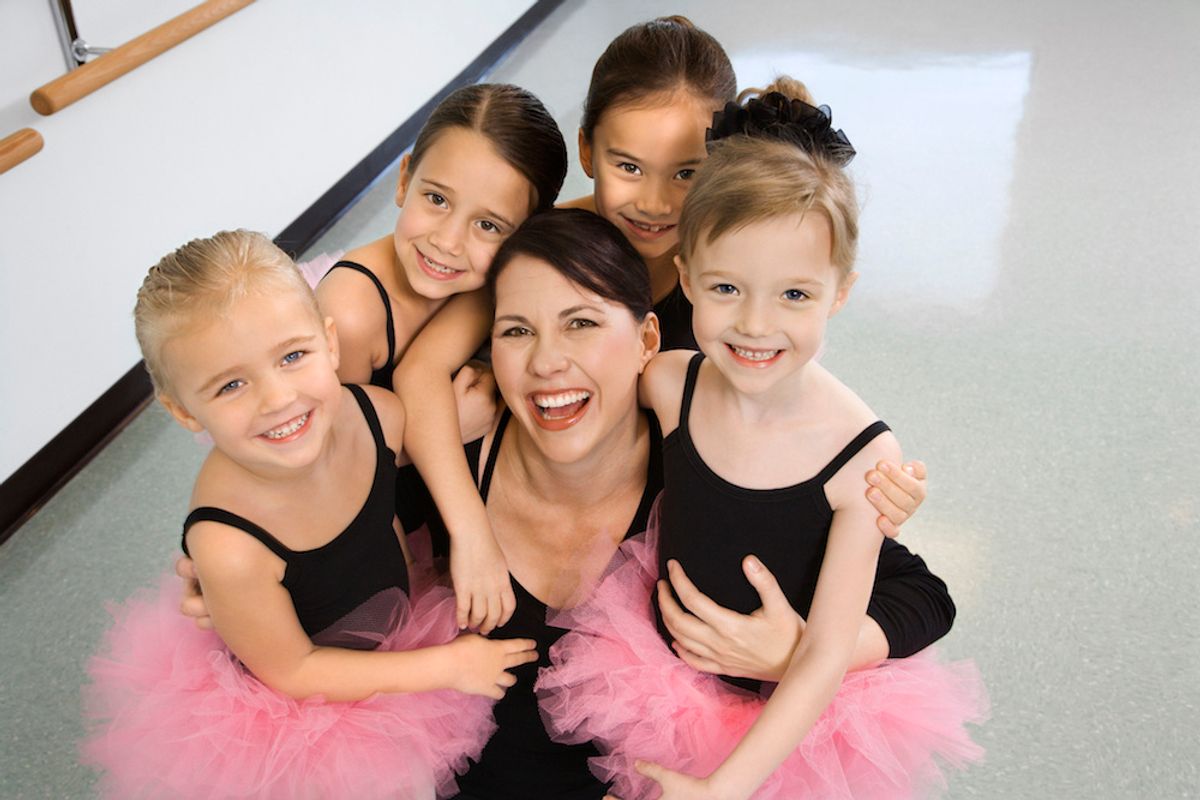
Dance teachers are just as apt to fall into the trap of perfectionism and self-criticism as the students they teach. The high-pressure environment that is the dance world today makes it difficult to endure while keeping a healthy perspective on who we truly are.
To help you quiet your inner critic, and by extension set an example of self-love for your students, we caught up with sports psychologist Caroline Silby. Here she shares strategies for managing what she calls “neurotic perfectionism.” “Self-attacking puts teachers and athletes in a constant state of stress, often making them rigid, inflexible and ultimately fueling high anxiety rather than high levels of performance,” Silby says. “Perfectionistic teachers, dancers and athletes can learn to set emotional boundaries. They can use doubt, frustration and worry about missing expectations as cues to take actions that align with what they do when teaching/performing well and feeling in-control. Being relentless about applying a solution-oriented approach can help the perfectionist move through intense emotional states more efficiently.”
Check out those strategies below!
GROUNDING
“It’s a technique that helps keep someone in the present,”Silby says. “Grounding helps reorient a person to the here-and-now and regain mental focus from an often intensely emotional state.”
1. Toe Push: Ground your feet and push each toe one at a time into the sole of your shoe starting with your pinkie.
2. Finger Breathing: Trace your right hand with your left pointer finger by moving your left pointer finger up and down the fingers of your right hand. As you trace your finger upward, inhale, and as you trace the finger downward, exhale.
3. Color Breathing: Identify an emotion you want to feel: for example, calm. Associate a color with that emotion: for example, blue. Then, identify an emotion you want to decrease, such as anxiousness, and associate a color such as red. Slowly breathe and imagine you are breathing in blue from your abdomen all the way up to your chest, and as you exhale, you release the red.
4. Reorient: Reorient yourself in place and time by asking yourself some or all these questions:
Where am I? What is today? What is the date? What is the month? What is the year? How old am I? What season is it?
5. Lock in: Keep your eyes open. Look to one spot. Feel your feet in your shoes/pushing into the floor. Tense and release the fist of your nondominant side; tense and release areas of your body feeling tension. Breathe in and out deeply. Focus on someone’s voice or your own voice.
6. 54321 game: Name five things you can see. Name four things you can feel (feet on the floor). Name three things you can hear right now (breathing, music, dancers’ voices). Name two things you can smell right now (sweat or two things you like the smell of). Name one good thing about yourself.
7. Neutral to Positive Cues: Focus attention on anything from neutral (your forehead) to positive (a lovely comforting place, or point in time or positive experience).
DEBRIEFING
“Debriefing performance levels allows perfectionists to monitor changes in physical and emotional states,” Silby says. “When you gain awareness of the actions and traits that contribute to high-level performance, consistency and control can be achieved. Debriefing also helps align actions with the season plan and create a consistent and coherent flow of information throughout all team members. Perfectionists tend to ask ‘bad’ questions like, ‘What’s wrong with me?’ instead of productive questions like, ‘What strength do I possess that I could have used today?'”
Examples of debriefing exercises:
1. Better Questions:
What strength/quality about myself did I make use of? What strength/quality did I not make use of?
What lesson did I learn today?
What am I grateful for right now? “Research shows that acknowledging five things you are grateful for per day leads to a 25 percent boost in optimism,” Silby says.
2. Two Pluses and a Wish
“You can debrief by identifying two to three pluses related to performance and one wish for something you could have done better,” Silby says.
RELAXING
1. Mindfulness
“Mindfulness is used to train yourself to be open to the moment and see what is in front of you with clarity,” Silby says. “It is a way to perceive and observe, as opposed to judging one’s feelings and experiences. Mindfulness can have a positive impact on heart rate, depression and anxiety, and there is some indication that it can strengthen attention control.”
2. Recognize Dimensions of Personality
“Friends, support networks and hobbies provide good recovery time and reduce anxiety,” Silby says. “Research indicates that having an ‘exclusive athletic identity’ (i.e. recognition of only one dimension of personality) is linked to vulnerability to high anxiety and depression.”
PERSPECTIVE CHECKING
“As much as we prepare for performance, we cannot map out with any certainty what we are going to see, feel and think at every moment,” Silby says. “It’s not just the facts of the situation—’I miscommunicated,’ for example—but the extrapolation of those facts into continuing problems—’I’m never going to grow this program’—that upsets us. Isolating the incident, while taking responsibility rather than making it an indicator of the rest of your life, is key. That will make the emotional impact of the event less severe, enable you to be in control and make finding a solution easier.”
1. Reframe
“Reframe anxiety and worry into curiosity. When you worry about being your very best, you are merely curious as to whether your performance/outcomes will match your expectations and capabilities,” Silby says.
2. Range of Good
“Create performance ranges from your best to acceptable rather than narrowing the performance expectation to such levels that your goals become suffocating,” Silby says.
I don’t know about you guys, but all of this advice has already made me feel like I can gain control over my feelings of perfectionism. Try some of her tips out and let us know what you think.




